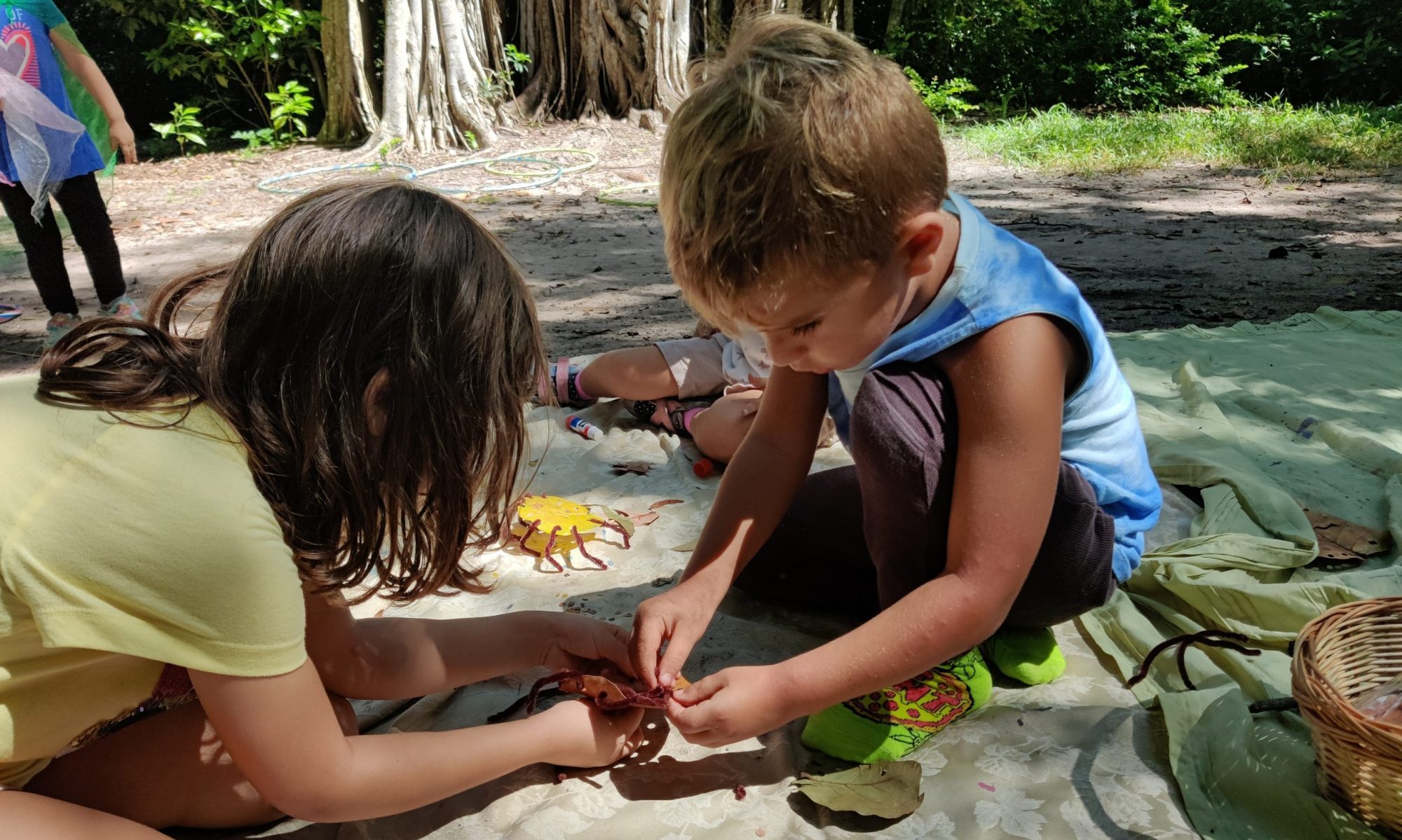Children enrolled in the Take Root Forest Learning Community can utilize the Forest Play Space: a space for self-directed play and socializing, reading, studying, game-playing, project-completion, eating and resting.
The Forest Play Space is available in between the hours of 9am & 10am, 12pm & 1pm, and 2pm & 3pm. The play space is open access and the kids come and go with autonomy in how they choose to use their time within the parameters of the play space guidelines.
In the Forest Play Space, the students may come and go and choose their own activities. There is no instruction or set activity time during Open Access. Some examples: Arts & Crafts table for child-directed art engagement, book nook – reading and quiet time, social area for talking and playing.
Take Root does not act as a childcare facility or provide child care. Open Access is provided only at certain times before or after classes. Take Root does not provide food, lunch and snacks are up to the family to provide and plan. Children are not signed in or out. School-aged children are able to leave the class/program without permission or guidance by the Take Root staff. Arrangements are made between the parent/caregiver and the child, the staff will be notified but they are not supervising this arrangement.
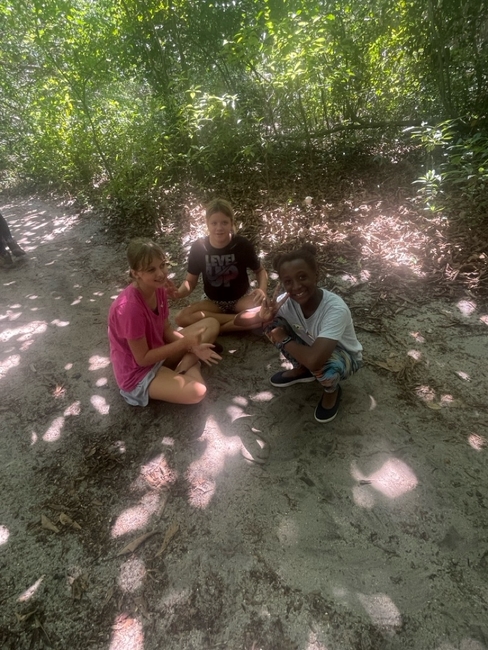
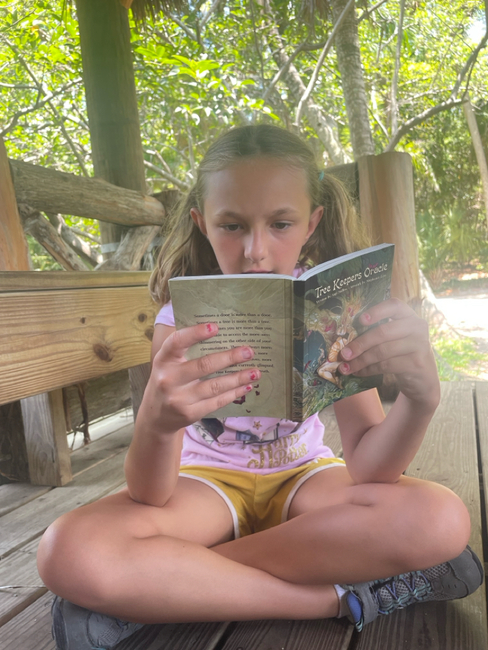
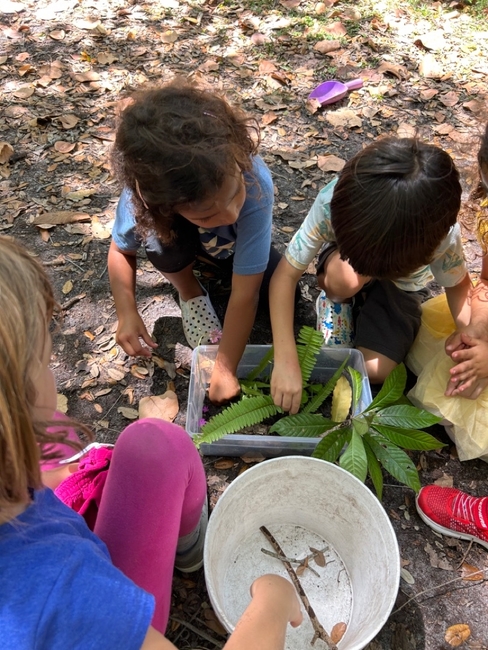
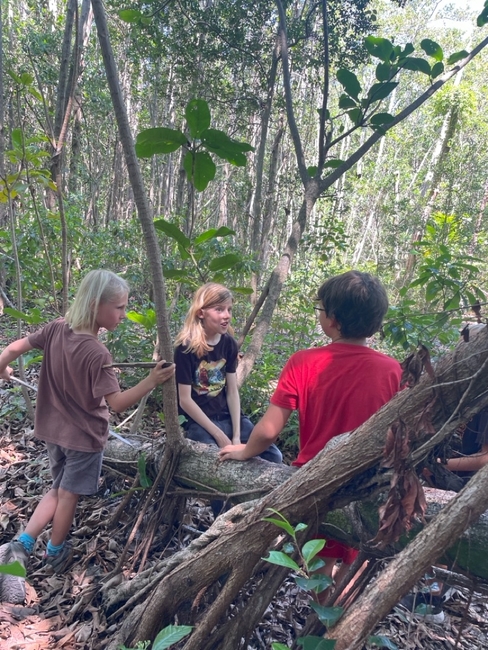
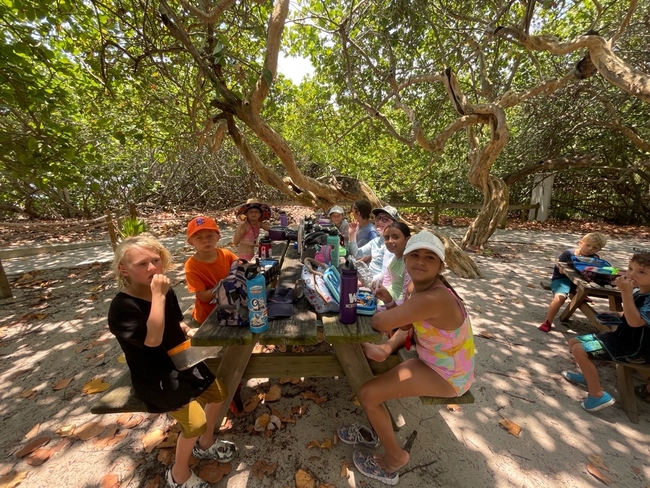
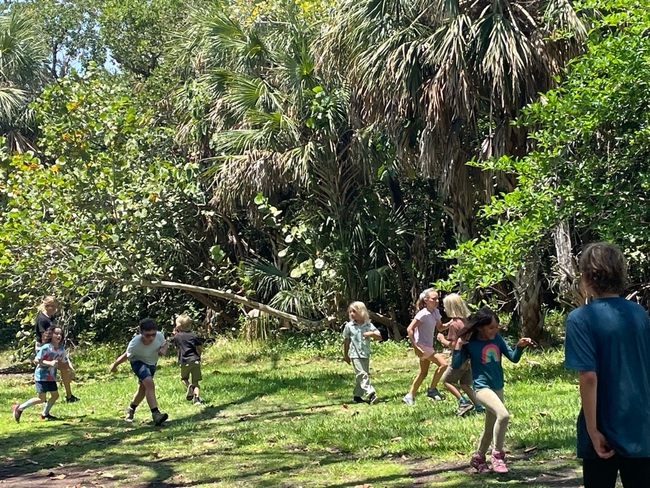
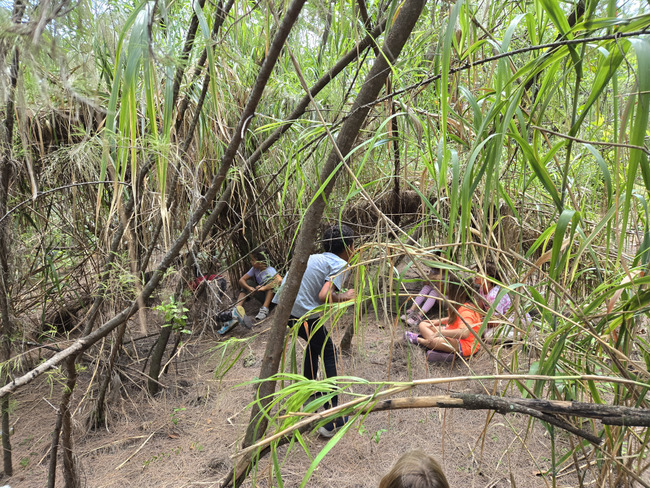
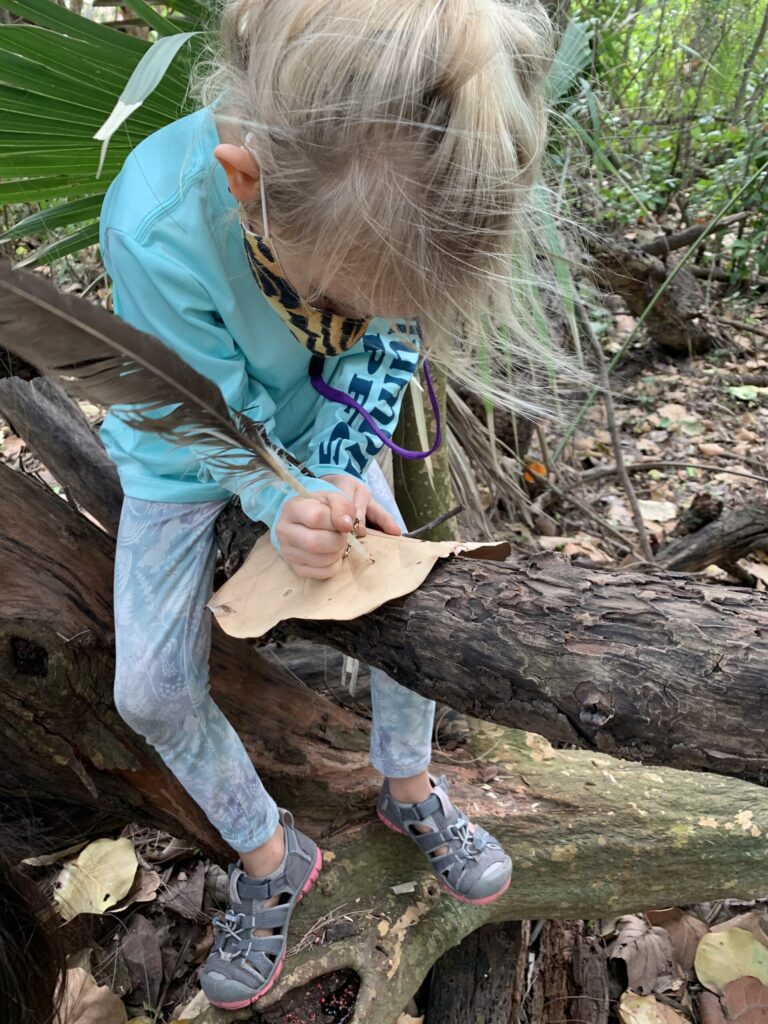
Benefits of Open Access Forest Play
Children are able to get physically active outside which not only improves overall health but also helps with self-regulation skills while engaging curiosity. Physical activity allows children to improve fine and gross motor skills. Coordination and agility are improved as children navigate the steps, logs, and natural obstacles of the forest and playground. Collecting natural treasures like rocks, leaves, and sticks activate fine motor skills.
- Unstructured free play in nature encourages socialization and teaches cooperation, negotiation, compromise and teamwork/team building.
- Children work through real life problems and scenarios through free play. This gives them a chance to make sense of the world around them and allows them to work through any anxieties they may have.
- By having open spaces and removing traditional toys and replacing them with the items nature provides, the potential for conflict is reduced (but not eliminated) which encourages healthier social development.
- Children develop a sense of self through unstructured free play.
- Children become more grounded, more calm, more relaxed, and more focused after prolonged quality nature immersion.
- Children have a chance to engage in restorative attention, or soft focus, while immersed in nature, leading to a sense of calmness. This can also lead to a decrease in attention/focus issues.
- Nature immersion provides children a chance to be quiet and still which can lead to a peacefulness that is often lost in today’s chaotic world.
- Through physical activity, the children become adept at: digging, running, hiking, balancing, skipping, tumbling, jumping, climbing, carrying heavy and large objects, coordination, and navigating uneven natural terrain. All in all, children in nature immersion programs develop exceptional fine and gross motor skills.
- Studies have found children in nature immersion programs have stronger immune systems leading to fewer illnesses.
- By being active as a young child, children are less likely to become obese and are more likely to become active adults.
- Children develop a sense of how to take risks and what is safe versus unsafe due to all the physical activities they engage in.
- Time spent in nature has been proven to improve children’s vision by encouraging refocusing from near objects to far away objects and back.
